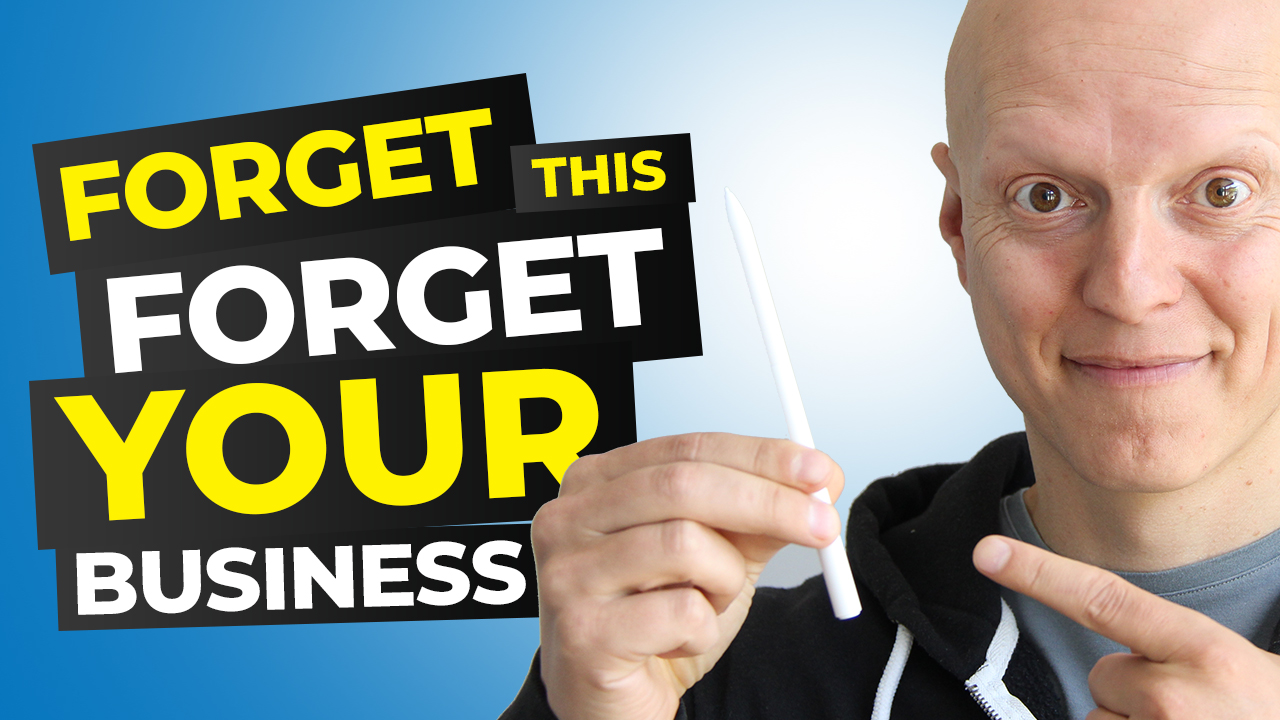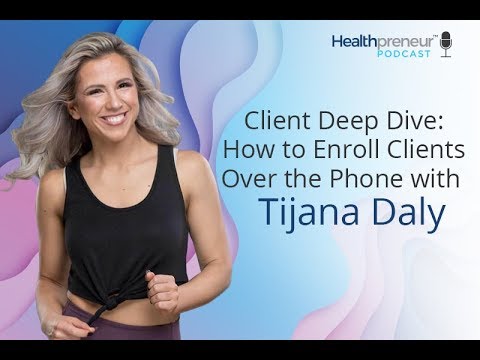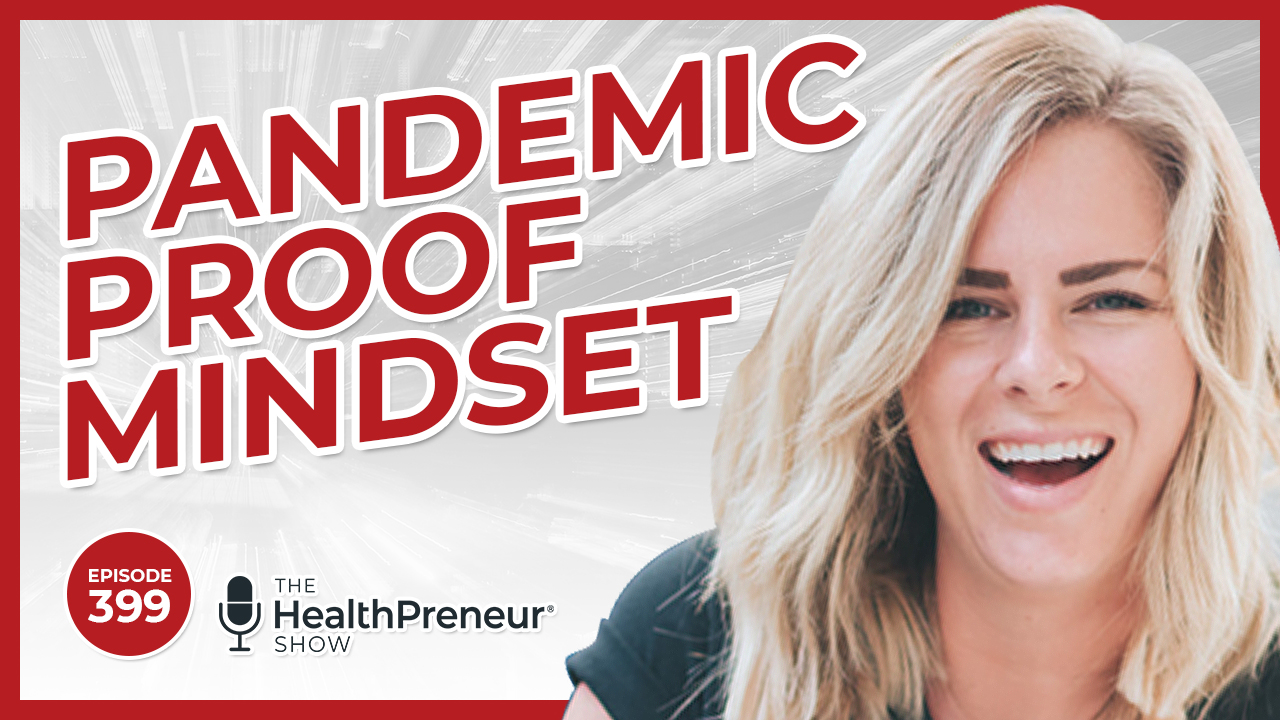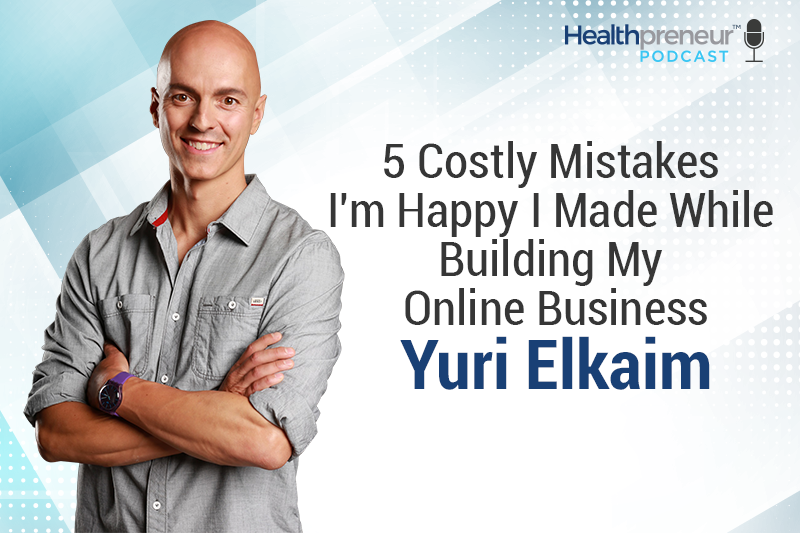The Perfect Client Pipeline
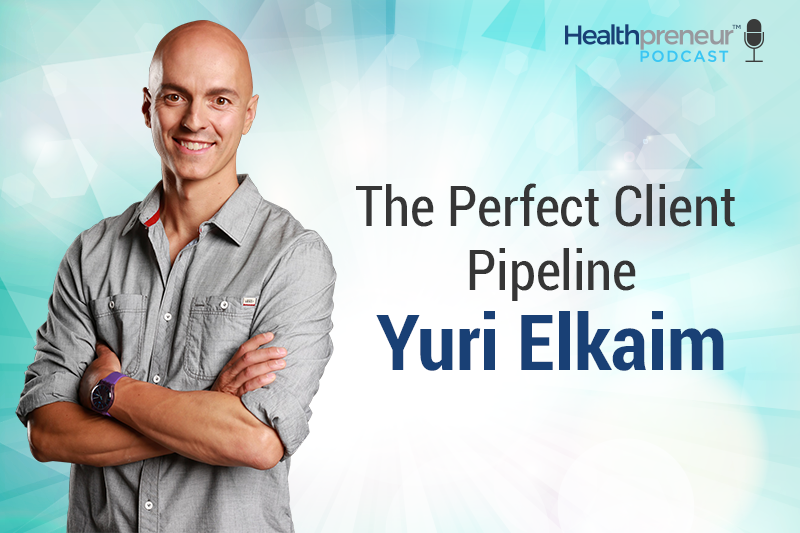
It’s Monday and you know what that means—another solo round on the Healthpreneur Podcast. I hope you guys are having a great day, and it’s about to get better because I will be coaching you through how you can create the Perfect Client Pipeline.
What is the Perfect Client Pipeline? Well, it’s a method that I have perfected in my business and you can use it to attract ideal prospects to your business. Generating leads is a constant struggle for many entrepreneurs—and while generating leads is great, it’s also important that you generate the right leads.
By creating a pipeline that attracts only the perfect, ideal clients for your business, you are getting guaranteed conversions. It’s simple, and I’m going to walk you through the three steps it takes to create this in your business. The best part about this pipeline? It is almost entirely automated, so you can get back to doing what you like to do in your business while the system keeps running and generating leads for you.
Just a heads up—this is mainly aimed towards coaching businesses. If you are selling a product, you may not get too much out of this episode.
In this episode I discuss:
2:00 – 3:30 – “My product is so good that I don’t have to advertise!” …Not quite.
3:30 – 4:30 – Step 1 — the ad
4:30 – 7:00 – Step 2 — the webinar
7:00 – 10:00 – Step 3 — the call
10:00 – 11:30 – Generating leads on autopilot
11:30 – 13:00 – How I can personally help you build your Perfect Client Pipeline
Transcription:
Hello! Yuri here, welcome to the Healthpreneur podcast. Hope you’re doing awesome.
So, today we’re going to be talking about the perfect client pipeline, and what this is going to do is help you attract your best prospects and clients into your business every single day, even while you’re sleeping—it’s like you’re on autopilot.
Sound good?
So, the biggest challenge that I continue to see with entrepreneurs—especially in the help space—is, “How do I generate more leads into my business?” And I should specifically talk about coaching here. A lot of people are doing manual prospecting, so they’re spending a lot of time in Facebook groups building their authority and then having some one-off conversations with people in Messenger. And that’s all good, but it’s not predictable.
“My product is so good that I don’t have to advertise!” …Not quite.
Some people are getting word of mouth referrals and generating business on the back end, but the challenge is that they don’t have any way of predictably generating leads on the front end. And I think there are some people who have put this badge of honor on the fact that they don’t have to advertise—their product is so good that they get word of mouth.
But here’s the way I look at it. If that is the case, then you have the ability to advertise because your system is so good. Does that make sense?
Some people might look at this as, “Your thing is so good you don’t need to advertise!” but I look at it as, “Your thing is so good, which allows you to advertise.” Because now you can get in front of your ideal prospects, wherever they are in the world, and move them through a pipeline that is going to have them engage with you.
So, in this episode specifically, I’m going to talk about coaching and coaching clients, okay? If you’re selling products, this is not really going to apply as much to you, but I want to really lay this down.
So, the nice thing about this pipeline is that you don’t have to do anything else from a marketing perspective other than what I’m about to give you. What that means is that you get to spend the vast majority of your time in your business—teaching, coaching, and serving your clients—instead of setting up new funnels, optimizing funnels, writing sales copy, writing long sales pages.
You don’t have to do any of that stuff. There’s no product launches, no summits, none of that stuff that we think we need to be doing but that actually sucks up our time and makes us miserable in the process.
If you’ve got a pen, you may want to write this down—and if you don’t, if you’re driving for instance, then just take a mental note of what I’m about to share with you.
First and foremost, there are three components to any successful business—and those are attracting qualified leads, converting those leads into clients who are paying you money, and delivering an amazing result to them. We call those attract, convert, and deliver.
Step 1 — the ad
The pipeline allows us to really deal with the first two—the delivery of an amazing program and your coaching program we’ll kind of save for another episode. But for now, all we’re going to do in terms of attracting qualified leads is set up a Facebook ad campaign.
Now, I would recommend at least one Facebook ad, but you want to try a couple different ones with different angles, hooks and so forth to speak to different people in your audience.
But for now, let’s just keep it simple and talk about one Facebook ad. That Facebook ad is going to get in front of your ideal prospects and invite them to a webinar. Now, we’ve been doing webinars for 10 plus years and we’ve sent paid traffic, joint venture traffic, internal traffic, traffic from content to all sorts of places—whether they’re lead magnets to opt in for something, content first, a sales page, etc.
Step 2 — the webinar
Time and time again, webinars are the highest converting tool you can use online.
The only thing that’s better than a webinar is one-on-one interaction. So a webinar allows us to do more of what we love to do—which is just share our awesomeness. All we’re gonna do is record a webinar—which is about 60 to 90 minutes—that is going to teach a specific topic. But it needs to be done in a very specific way to move people to the next level.
Again, there’s a very big difference between a webinar and a webinar that converts. There’s a huge difference between having a Facebook ad and having a Facebook ad that converts.

I’m not going to go into the nuances here—this is exactly what we teach you in our health business accelerator workshop, we actually help you build all this stuff out. But for now, I want to give you the framework of how to think about this.
So, you’ve got a Facebook ad, goes to a webinar. At the very minimum, if no one engages with you beyond the webinar, at least they leave that with a great experience. They’ve learned something valuable. They’ve had their perspective shifted a bit. They can see a new possibility.
But the right people will move to the next level with you.
Step 3 — the call
Now, if you’re selling coaching—which if you’re listening to this, you probably are—at a higher price level, maybe three to five thousand dollar coaching packages where you’re working with a group of people, not one on one… In order for you to enroll these people, you can’t send them to a sales page.
Number one, they’re gonna take forever to make a decision, so you’re going to go back and forth trying to chase them down, which is a waste of time. What we want to do is invite them to a call, and on that call basically figure out if we can help them. If we can, we’ll do some of that on the phone and then we’ll just invite them to work with us in our coaching program.
Now, before the call there’s an application. So, from the webinar, we’re selling the call—we’re not selling the coaching program, okay? You want to plant the seed for the program. You want to let them know of where things may go if they want to choose that, but the webinar is built to get them on a call.
Now, getting people to register for a webinar is a big commitment. They’re going to spend an hour of their time or so fixated on a webinar. That’s very tough to do in today’s day and age. That’s why people think webinars don’t work.
I’m telling you, we do this all the time. It’s working. It’s much more effective than sending people to a lead magnet where there’s no commitment.
Second, we’re asking people to fill out an application after the webinar and before the call. So, now they’re going to book a time to chat with you and they’re going to fill out an application—which is another level of commitment.
Then and only then will you get on the phone with them to have a 15 or 30 minute conversation about where they are, where they want to go, where they’re stuck and how you can help them move to the next level.
Generating leads on autopilot
This is the perfect client pipeline. Facebook ad webinar, webinar to application, and then you basically have a call after that. You don’t need to complicate things any more than that.
You really don’t have to do anything else in your business other than running the system and the beautiful thing about this is that of those four components, three of them are automated. You don’t touch the application after it’s built. It’s done. You don’t really have to touch the webinar unless it tanks and doesn’t work, in which case you’ll want to rework it a little bit. But it’s a one time recorded evergreen webinar. We’re not talking about doing this live everyday.
And then third step is the Facebook ads. You create them once and then you simply manage them on a weekly basis with maybe an hour of your time. So it’s not like you have to do this day in and day out. You have the Facebook ads and webinar doing all of the digital prospecting and selling on your behalf. And then your time is spent talking to people on the phone and seeing if you can help them—and that becomes really exciting.
I really enjoy these calls—what we call result accelerator calls. They’re a lot of fun for me because I love speaking with people. I love getting to the root of their problems and helping them solve those, and then really getting more intel on our marketplace.
So it’s a great way, in my case, to understand what people are experiencing on a day to day basis in their businesses. And in your case, maybe what they’re experiencing in their lives that you can then bring back to your marketing and your messaging to better speak their language.
It’s immensely, immensely powerful.
The other thing is that if you’re enrolling someone into a three or five thousand dollar program, getting on the phone with them is the best use of your time. There’s nothing else you could do in your business that is going to give you the type of return that you will get with being on the phone with someone.
And if you do things properly, you should be enrolling one out of two of those prospects, if not more.
So I spend about three to four hours of my day—almost every day—taking these types of calls because I enjoy them and I enroll a lot of people, which is terrific. So it’s great for everyone. I’m able to provide great value, I’m able to hit our financial goals, and I’m also able to do something I really enjoy doing.
I spend anywhere from 10 to 12 hours a week on these calls and then, in terms of delivering a program, we do this in the form of a two day workshop called the Health Business Accelerator. We also now offer a six week online version of that as well.
But most of my time delivering the program is very minimal, it’s literally a couple hours of my time every week. So, if you’re someone who is coaching clients, instead of doing one on one you bring them into a group and that deliverable is going to take you two to four hours a week, in the way that we teach.
In addition to that you have your enrollment calls, which might be five to ten hours or more per week, whatever you want. So now you have a business that is really focusing on the most important things that are gonna move the needle for you, that are gonna help you impact your clients at a deeper level—and everything else goes by the wayside.
You don’t need to write blog posts. You don’t need to have a YouTube channel. You don’t need to do a podcast if you don’t want to. You don’t have to be on Instagram, you don’t have to do Facebook.
I mean, it’s nice to be on those platforms, let’s just be honest. It’s probably a good idea to have a Facebook group, a Facebook presence. But you don’t have to spend all of your time manually prospecting people. You don’t have to be doing 30 Instagram stories a day and just being like, “Why can’t I be present with my kids and my life?”
When you have a predictable machine that is working on your behalf, on autopilot 24/7, it frees you up to do more of what you love to do—which is teaching, coaching, and serving your clients.
How I can personally help you build your Perfect Client Pipeline
So, that is the perfect client pipeline. Now, if you’d like me to personally help you build your perfect client pipeline in your business, help you craft out your Facebook ads, help you build your webinar, help you get the framework and understanding of how to do these enrollment calls and how to build out what we call the Dream Come True system … Then I’d be delighted to help you, if you qualify.
So, we do this in our Health Business Accelerator workshop, and if you’d like to learn more about it just go over to HealthpreneurGroup.com/workshops. When you’re there, you can read the page and find out what it’s all about, and then simply apply to attend our live workshop or our online version, whichever one is best for you.
We’ll receive your application and get back to you within 24 hours. Is that good?
So, that is really the most in-depth way I can help you build this side of your business so that you have a lot more clarity, a lot less confusion, and a system to attract better clients and make a lot more profit. If you’d like that, HealthpreneurGroup.com/workshops is the place to get started.
I hope you’ve enjoyed this episode, and if you have, remember to subscribe to the Healthpreneur podcast because we’ve got some really cool stuff coming up for you this week.
Dr. Spencer Nadolsky is going to be showing you how he built a virtual medical practice. Yeah, it’s pretty interesting. And then we’ve got Jen Oliver on Friday who’s also an online health coach. Lots of great stuff that kind of flows from this conversation, coming your way this week. You don’t want to miss any of those episodes, so be sure to subscribe. And until Wednesday, I hope you have an amazing day.
Go out there, continue to be great, do great, and I will talk with you then.
If you enjoyed this episode, head on over to iTunes and subscribe to Healthpreneur™ Podcast if you haven’t done so already.
While you’re there, leave a rating and review. It really helps us out to reach more people because that is what we’re here to do.
What You Missed
On the last episode, I spoke with Kevin Gianni who transitioned from a virtual business to a product-based business after traveling around in a “Kale Whale”…tune in to find out what that’s all about. In many ways, Kevin isn’t your traditional entrepreneur; he’s got an interesting stance on business plans, goals, and expectations that may surprise you.
If you’re an entrepreneur looking to get your nose into a product business, this episode will really hit home and provide you with some priceless wisdom. If you find yourself getting bored and wanting to start something new, you’ll find some much needed gems that’ll steer you in the right direction.
Related posts
February 19, 2019
How To Enroll Clients Over The Phone With Tijana Daly
We’re super-excited for today’s…
October 30, 2017
5 Costly Mistakes I’m Happy I Made While Building My Online Business
I’ve got a solo episode for you…


